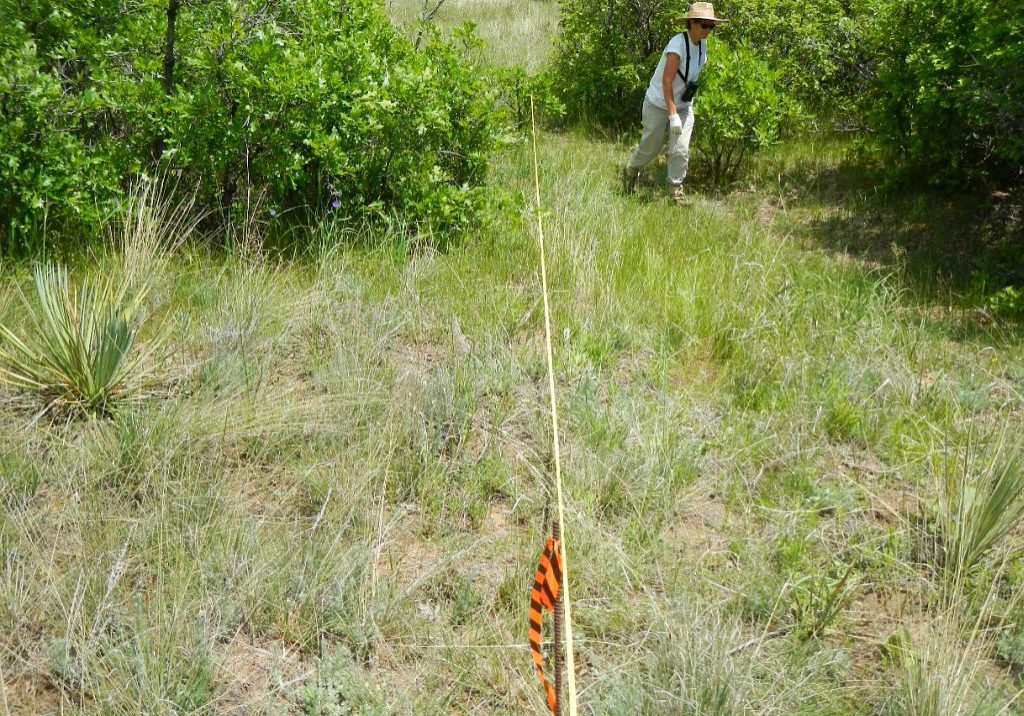Monitoring & Assessment
CNHP is a leader in monitoring the status of Colorado’s rare species and plant communities. CNHP’s monitoring efforts provide information and feedback that are critical for the management of our natural heritage resources throughout the state. These surveys have contributed important information on population status and viability of species such as Boreal Toad, Preble’s Meadow Jumping Mouse, Pawnee Montane Skipper, noxious weeds, several rare plant species, and the impacts of grazing and management on prairie. CNHP has also pioneered techniques for assessing the biodiversity status of wetlands and other ecosystem types. Wetland condition assessment tools in development by CNHP, including Floristic Quality Assessment, Vegetation Index of Biotic Integrity, and Ecological Integrity Assessment, are helping to identify conservation priorities and opportunities throughout Colorado.
Featured Topics

Rare Plant Inventory, Mapping and Monitoring
CNHP conducts extensive surveys to inventory and monitor rare plant populations across Colorado. We have mapped thousands of locations of over 600 plant taxa of concern and have on-going monitoring for many of our rare plant species.
Visit the Rare Plant Inventory, Mapping and Monitoring Page
Single-species Monitoring for Sensitive Wildlife
CNHP has been a leader in population and ecological studies of rare and lesser-known animal species. We have been leaders in population monitoring of some of Colorado’s rarest animal species, including the boreal toad, the Preble’s meadow jumping mouse, Pawnee montane skipper, and little brown bat.
Visit the Single-species Monitoring for Sensitive Wildlife Page
Noxious Weed Inventory, Mapping and Monitoring
Many of Colorado’s native landscapes have been altered by the arrival of plants from other regions of the globe. Maps of invasive plants and long-term monitoring are critical for effective management and protection of native communities. CNHP conducts surveys to inventory, map and monitor noxious weeds across Colorado.
Visit the Noxious Weed Inventory, Mapping and Monitoring Page
Conservation Easement Monitoring and Baseline Reporting
CNHP scientists perform easement monitoring on a number of ranches in Colorado. We are also engaged with multiple partners to create collaborative solutions for the private lands conservation community. Watch this space for news about conservation easement baseline reporting projects to come!
Visit the Conservation Easement Monitoring and Baseline Reporting Page
Global Observation Research Initiative in Alpine Environments (GLORIA)
GLORIA is a long-term, global observation network for the comparative study of climate change impacts on mountain biodiversity, specifically plants. CNHP has been involved in establishing and monitoring GLORIA stations in several National Parks.
Visit the Global Observation Research Initiative in Alpine Environments (GLORIA) Page
Gunnison Basin Climate Change Adaptation and Wetland Restoration Monitoring
Downcutting of streams, often caused by historic grazing, has lowered the water table in many seasonal wetlands in the Gunnison Basin. As part of ongoing work to address climate change in the basin, a collaborative multi-agency team is restoring seasonal wetlands through small-scale modifications to drainage. Results show that such efforts can enhance the resilience of the wetlands under changing climate conditions.
Visit the Gunnison Basin Climate Change Adaptation and Wetland Restoration Monitoring Page
Wetland Condition Assessment
CNHP has developed several methods to assess and monitor the ecological condition, habitat quality and water quality of wetlands throughout the state. These methods have been applied to assess the condition of wetlands in several large scale wetland assessment projects.
Visit the Wetland Condition Assessment Page
Wetland and Riparian Monitoring
CNHP partners with land management agencies to monitor the condition of wetland and riparian ecosystems in Colorado and across the West.
Visit the Wetland and Riparian Monitoring Page



